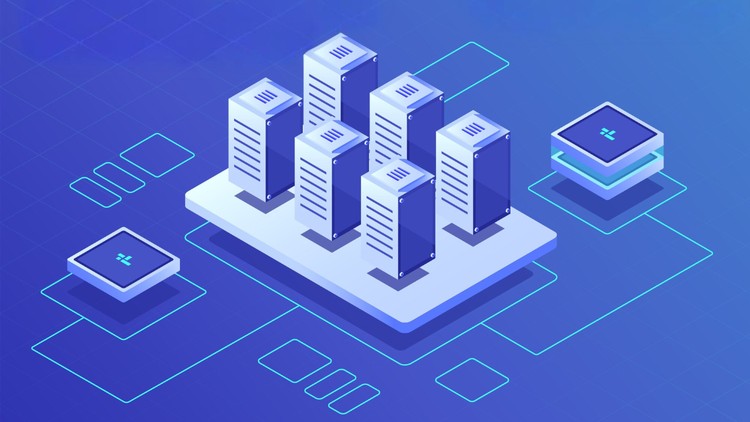
Unlock the potential of Oracle APEX to rapidly build scalable, secure, and modern web applications with ease.
What you will learn
The fundamentals of Oracle Application Express (APEX) architecture.
How to set up and configure Oracle APEX and Oracle REST Data Services (ORDS).
Techniques for creating dynamic, data-driven web applications.
Mastery of shared components, authentication, and application utilities in APEX.
Advanced form and report page creation.
Effective use of Oracle APEX debugging and maintenance tools.
Best practices for managing workspaces and user roles.
Why take this course?
Oracle Application Express (APEX) is a powerful, low-code development platform that enables you to build scalable web applications with robust functionality. This course, Mastering Oracle APEX: Comprehensive Guide to Building Web Applications, is designed to take you from the basics to advanced concepts, empowering you to create dynamic, data-driven applications. Whether you’re a beginner or a seasoned developer, this course covers all essential aspects of Oracle APEX, from installation to advanced development techniques, providing you with the skills to excel in modern web development.
Section 1: Introduction to Oracle Application Express
This introductory section covers the basics of Oracle APEX. It starts with a general overview of what Oracle APEX is, its features, and how it simplifies the process of web application development. You will gain a foundational understanding of the platform and how it fits into the Oracle ecosystem.
- Lecture 1: General Introduction (Preview enabled)
Section 2: Pre-Installation Tasks
Before diving into the development, it’s crucial to set up your Oracle APEX environment correctly. This section covers the pre-installation steps, including understanding the role of the web listener, various listener options, and the overall architecture of Oracle APEX. It also guides you through installation and essential maintenance tasks.
- Lecture 2: Pre-Installation Tasks and Role of the Web Listener
- Lecture 3: Listener Options, Architecture, Associated Roles
- Lecture 4: General Maintenance
- Lecture 5: Installation
- Lecture 6: Post Installation Tasks
Section 3: Installing Oracle REST Data Services (ORDS)
Oracle REST Data Services (ORDS) is essential for enabling RESTful web services in APEX. This section walks you through the installation and configuration of ORDS, allowing you to integrate RESTful services seamlessly with your APEX applications.
- Lecture 7: Installing ORDS – Part 1
- Lecture 8: Installing ORDS – Part 2
- Lecture 9: Configuring RESTful Services with APEX
Section 4: Getting Started with Oracle APEX
Learn how to get started with Oracle APEX by logging in, creating workspaces, and managing user roles. This section is crucial for beginners as it lays the foundation for application development within Oracle APEX.
- Lecture 10: Logging In
- Lecture 11: Creating Workspace
- Lecture 12: Creating Additional Workspaces, Developers, and User Roles
- Lecture 13: Logging in as Workspace Administrator and Developer
Section 5: Data Applications
In this section, you’ll explore the core functionality of Oracle APEX by comparing Database Applications with Websheet Applications. You’ll learn how to use the Create Application Wizard, manage user interfaces, and perform application management tasks.
- Lecture 14: Comparing Database Application with Websheet Application
- Lecture 15: Create Application Wizard – Overview
- Lecture 16: Deleting Applications, Managing UI, and Page Management
Section 6: Creating Form Pages & Report Pages
Discover how to create dynamic form and report pages within Oracle APEX. You’ll get hands-on experience in creating form pages for data entry and report pages for data visualization using the classic style.
- Lecture 17: Creating a Form Page and Entering Data
- Lecture 18: Creating a Form Page – Continued
- Lecture 19: Creating a Report Page in Classic Style
Section 7: Shared Components
Shared components in Oracle APEX allow you to reuse elements across different applications. This section covers managing authentication schemes, globalization attributes, application utilities, and debugging techniques to enhance the functionality of your applications.
- Lecture 20: Shared Components – Removing Tabs
- Lecture 21: Managing Authentication Schemes
- Lecture 22: Globalization Attributes and Shared Components
- Lecture 23: Using the Find Icon and Managing Developer Comments
- Lecture 24: Application Utilities – Part 1
- Lecture 25: Application Utilities – Part 2
- Lecture 26: Managing Application Groups
- Lecture 27: Creating Websheet Applications as a Workspace Administrator
- Lecture 28: Exploring Packaged Applications
- Lecture 29: Packaged Applications – Continued
- Lecture 30: Debugging an Application
Conclusion:
By the end of this course, you will have a solid grasp of Oracle APEX and the skills needed to build and deploy robust web applications. You’ll be capable of managing the full application lifecycle, from installation and configuration to advanced development and deployment. This course is designed to provide practical, hands-on experience that will equip you to leverage Oracle APEX for your web development needs.